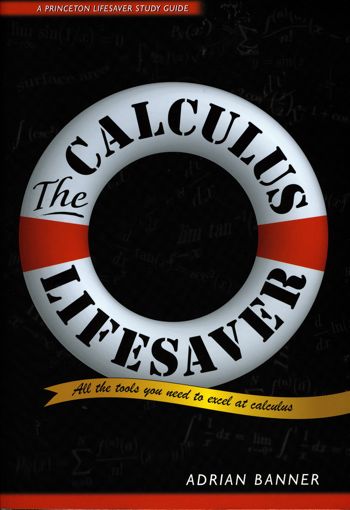Saturday April 25, 2009 Regina, Saskatchewan
9:20 am
This is the first morning where I use my new website to describe my mathematics Learning activity. The goal today is to review chapter 1 from "The Calculus Lifesaver".
This will involve two steps:
- Read and yellow highlight important sections.
- Copy some yellow sections to this web page.
- Continue to use Dumbo feather green sections for notes.
- Continue to use brown insert boxes for personal commentary.
- Make handwritten answers to the examples in the book.
Now to begin.
The Calculus Lifesaver
Adrian Banner
It has been a long time since I last looked at this chapter. I want to begin by copying some of the yellow highlighted sections into these notes.
When I encounter an example I shall immediately copy it into my handwritten notes and then try to work through it. Then I will compare my work with that in the book. |
- "A function is a rule for transforming an object into another object." [p. 1]
- "By the way, f is the transformation rule, while f(x) is the result of applying the transformation rule to the variable x. So it's technically not correct to say 'f(x) is a function', it should be 'f is a function'. " [p. 2]
- "A function must assign a unique output for each valid input." [p. 2]
- "... the range is actually a subset of the codomain. The codomain is a set of possible outputs, while the range is the set of actual outputs." [p. 2]
The term codomain is new to me. I do not recall this distinction when taking calculus in 1961. |
- interval notation is an excellent way of describing the domain, codomain and range of a function. It is compact and unambiguous.
I am familiar with this notation and must remember to use it when possible. It is also a good idea to draw the corresponding image of the real number line. Two representations are better than one. |
- "What is the graph of a function f, anyway. Well, it is the collection of all points with coordinates (x, f(x)), where x is in the domain of f." [p. 6]
- "Here's the key idea: you can't ahve two points with the same x-coordinate. In other words, no two points on the graph can lie on the same vertical line. ... So, this leads to the vertical line test." [p. 6]
- "... the horizontal line test: if every horizontal line intersects the graph of a function at most once, the function has an inverse." [p. 8]
- "... how do you find the inverse of a function f? Well, you write down y = f(x) and try to solve for x. ... solving for x is not always easy and in fact is often impossible. On the other hand, if you know what the graph of your function looks like, the graph of the inverse function is easy to find. The idea is to draw the line y = x on the graph, then pretend that this line is a two-sided mirror. The inverse function is the reflection of the original function in this mirror." [p. 9]
The idea of the mirror at y = x is another way of saying that you reverse the roles of x and y. |
- "... if the horizontal line test fails and there's no inverse, what can be done? ...one idea is to restrict the domain of the function. Effectively, we ghost out part of the curve so that what is left no longer fails the horizontal line test." [p. 9
The text now has some relatively simple notational expressions involving inverse superscripts. This is very difficult to represent with conventional HTML code.
It is surprising that mathematical expressions are still not easily handled by web browsers or authoring systems. The Web was originally designed for the use of physicists, but clearly it has been usurped by commercial interests. |
The next section is on the composition of functions. I would like to read this section when I am fresh from a break. Hopefully later today. |
Tags: mathematics, calculus
Here is the link to my handwritten work for today:

Books on the Go Today |
|
see below |



